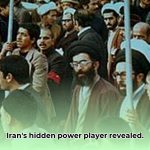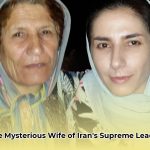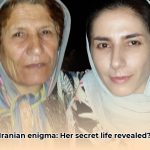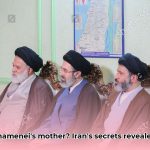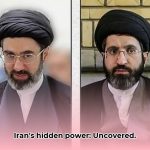Ever wonder about the life of the wife of Iran’s Supreme Leader? You probably haven’t seen much of her. Mansoureh Khojasteh Bagherzadeh maintains a remarkably low profile. For more details, see her personal history. This article attempts to piece together what little is known about her life – her background, activities, and even her birthdate – and explains why finding concrete information is surprisingly difficult. We’ll examine the available information, explore the reasons behind her privacy, and discuss the challenges of investigating someone who actively avoids the spotlight in a country like Iran. It’s a detective story about a real person, and we’ll explore how far our research can take us.
Mansoureh Khojasteh Bagherzadeh’s Public Appearances: A Life Largely Unknown
Mansoureh Khojasteh Bagherzadeh, wife of Iran’s Supreme Leader Ali Khamenei, is a figure shrouded in mystery. Unlike many First Ladies whose lives are constantly under the media spotlight, Ms. Bagherzadeh’s personal life remains largely private. This raises intriguing questions: What are the reasons for this secrecy? What does it reveal about power dynamics in Iran? And what can we realistically uncover about her? Unraveling the truth requires piecing together a puzzle with numerous missing parts. What societal elements influence her choice to maintain such a low profile, and what effect does this have on the transparency of Iranian leadership?
Even seemingly simple details – such as her exact birthdate – are debated among experts. What is known is that she married Mr. Khamenei in 1964, a fact universally acknowledged. Her family is from Mashhad, and they are believed to have been a well-off, religious family. Many accounts describe her as deeply religious. She is consistently portrayed as dedicated to charitable work, especially helping families affected by conflict and supporting war veterans. Is this dedication a personal calling, or does it fulfill a broader sociopolitical function within Iran?
These confirmed details are limited. The vast majority of her life remains hidden from the public eye. This lack of information isn’t simply due to a shortage of records; it stems from a deliberate policy of secrecy surrounding the private lives of prominent political figures in Iran. This makes research particularly difficult. The level of privacy maintained by Iranian officials might seem unusual compared to the transparency often expected in other countries. How does this culture of secrecy affect public perception and trust in leadership?
The mystery extends beyond basic biographical facts. Her specific role, if any, in her husband’s political career remains unclear. The full scope of her charitable endeavors is vague. Even seemingly trivial details, like her height, are inconsistently reported. The difficulties in uncovering the truth highlight how challenging it is to study someone who actively avoids public life. This conscious privacy contrasts sharply with the often-intense media scrutiny faced by First Ladies in other countries. This limited information impacts our ability to analyze her influence, and the challenges of uncovering the truth emphasize the complexities of studying public figures who deliberately avoid the limelight.
Investigating Mansoureh Khojasteh Bagherzadeh’s public appearances (or lack thereof) is like trying to solve a complex riddle. The scattered information reflects not only a lack of accessible documents but also a calculated effort to keep things hidden. Researchers must therefore employ creative methods: carefully comparing and contrasting existing sources, understanding potential biases, and acknowledging the limits of available information. Is Ms. Bagherzadeh’s limited public presence a personal choice, or does it reflect broader constraints imposed by Iran’s political system?
To further understand Ms. Bagherzadeh’s life and her choice of privacy, more research is needed. This research could involve several groups working together.
Future Research Avenues:
| Stakeholder Group | Short-Term Goals (Next 1-2 Years) | Long-Term Goals (3-5+ Years) |
|---|---|---|
| Iran Scholars & Experts | Scrutinize existing records for verifiable facts, cross-referencing diverse sources. | Compile a thorough biography using archived materials, primary documents, and interviews, if possible. |
| Journalists & Media Outlets | Develop strict ethical guidelines for reporting on the private lives of public figures, focusing on verifiable facts and avoiding speculation. | Conduct comparative studies examining information control in different political systems. |
| Human Rights Organizations | Investigate the impact and reach of Ms. Bagherzadeh’s humanitarian work, emphasizing transparency and accountability. | Advocate for increased access to information and government transparency in Iran. |
| Independent Researchers | Utilize open-source intelligence techniques to gather and analyze publicly available information. | Collaborate with international archives and research institutions to locate potentially relevant documents. |
| Academic Institutions | Promote interdisciplinary research projects focusing on women in Iranian politics and society. | Organize conferences and workshops to facilitate the exchange of knowledge and perspectives on Iranian leadership. |
Could her low public profile be a deliberate choice, rather than enforced secrecy? Some might argue that she is simply a private person who prefers to stay out of the public eye. Others might believe it’s a strategic political decision. The truth might lie somewhere in between, or involve other factors completely unseen. What steps can be taken to foster constructive dialogue and bridge differing perspectives on Ms. Bagherzadeh’s public role?
The scarcity of readily available information about Ms. Bagherzadeh’s public life reveals much about privacy and power in Iran. It presents a unique puzzle, a compelling challenge, and a worthwhile area for continued investigation. The complexities of the Iranian political system and the inherent difficulties of researching someone who leads a largely private life combine to create a fascinating, though demanding, subject for study. Ongoing research promises to provide a more comprehensive, though possibly still incomplete, understanding of this enigmatic figure. Examining the role of women in Iranian politics and society offers a more detailed perspective on figures like Mansoureh Khojasteh Bagherzadeh.
How to Verify Conflicting Information About Mansoureh Khojasteh Bagherzadeh
Key Takeaways:
- Limited public information is available about Mansoureh Khojasteh Bagherzadeh. Her life is largely private.
- Verifying information requires careful analysis of multiple sources, considering the socio-political context of Iran.
- Discrepancies exist regarding biographical details, highlighting the challenges in accessing reliable data.
- Research should prioritize verifiable facts and avoid speculation, especially given cultural norms and security concerns.
The Elusive First Lady: A Wife in the Shadows
Mansoureh Khojasteh Bagherzadeh, wife of Iran’s Supreme Leader Ali Khamenei, remains an enigmatic figure. While her life is intrinsically linked to Iran’s power structures, she actively avoids the public eye. This creates a significant challenge: how to verify conflicting information about Mansoureh Khojasteh Bagherzadeh? The scarcity of reliable information fuels speculation and necessitates a nuanced approach to research. What are the consequences of relying on unverified information when reporting on public figures in politically sensitive contexts?
Navigating a Labyrinth of Information
Confirming even basic biographical details proves difficult. Her birthdate, for example, varies across sources. Was she born in 1945, 1947, or perhaps another year? Such inconsistencies highlight the complexities of verifying information about someone who deliberately maintains a low profile. The limited resources available often offer conflicting narratives, making it vital to evaluate each piece of information critically. Does the proliferation of conflicting information indicate a deliberate effort to obfuscate details about Ms. Bagherzadeh’s life and background?
A crucial point to remember is the potential for misinformation, whether intentional or accidental. Always question the information presented and seek corroboration from multiple, independent sources.
Assessing the Reliability of Sources
One of the primary obstacles in verifying information lies in the reliability of sources. Some websites provide conflicting details or unsubstantiated claims. Others offer anecdotal evidence, without proper citations or verifiable proof. Therefore, how to verify conflicting information about Mansoureh Khojasteh Bagherzadeh becomes a crucial question in this information landscape. It’s essential to critically assess the credibility of each source, considering its potential biases and motivations. What metrics can be used to evaluate the reliability and trustworthiness of sources when researching individuals in politically charged environments?
Consider the source’s history, funding, and potential political affiliations. Look for evidence of journalistic integrity, such as fact-checking policies and corrections.
The Socio-Political Context: A Crucial Consideration
Iran’s socio-political context significantly influences the availability of information. Cultural norms emphasizing family privacy, coupled with security concerns surrounding the Supreme Leader’s family, restrict public access to their private lives. This reality complicates efforts to verify details about Mansoureh’s life, prompting a new question: how to verify conflicting information about Mansoureh Khojasteh Bagherzadeh within this politically sensitive environment? How can researchers effectively navigate cultural and political sensitivities while striving to uncover accurate information about public figures?
Understand the potential implications of publishing information about the Supreme Leader’s family. Balance the pursuit of knowledge with the need to avoid causing harm or endangering individuals.
A Methodology for Verification
To navigate this challenge, a multi-pronged approach is necessary. This involves:
- Triangulation: Corroborating information from multiple independent sources is crucial. A single source is rarely sufficient.
- Source Evaluation: Assess the credibility of each
- Unveiling the Enigma: Mansoureh Khojasteh Bagherzadeh’s Public Appearances & Private Life in Iran - July 18, 2025
- Unveiling the Mystery: Mansoureh Khojasteh Bagherzadeh’s Husband: A Rare Glimpse into a Private Life - July 18, 2025
- Unveiling Masoud Khamenei’s Mother: Power, Influence, and Iran’s Future - July 18, 2025

